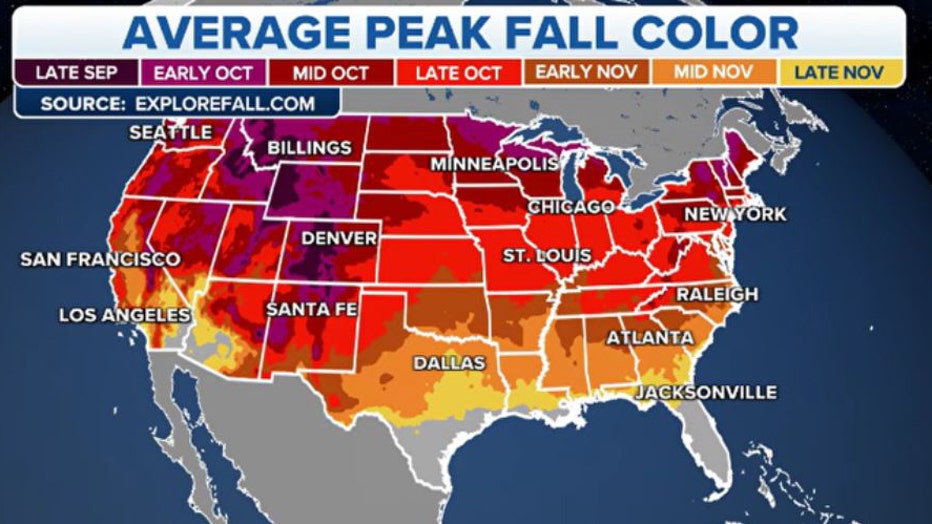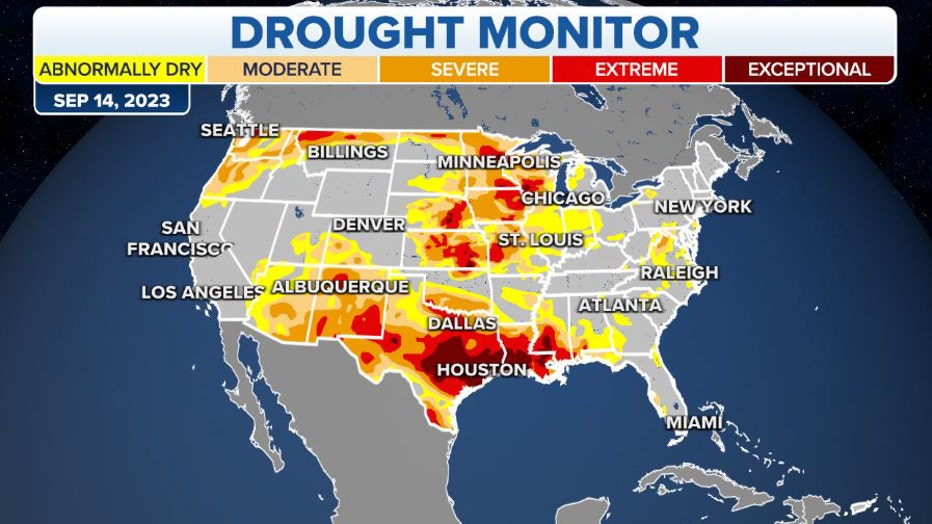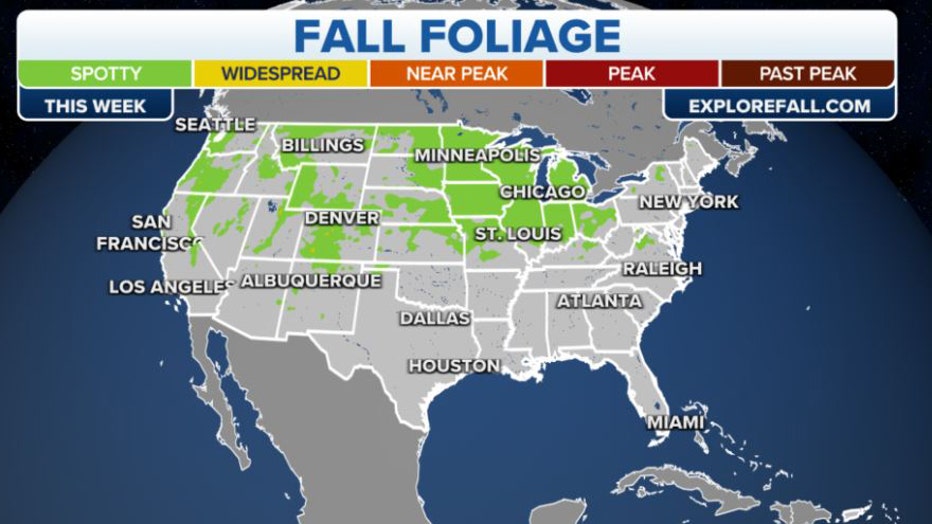Fall foliage outlook 2023
FILE-Aerial view of colorful fall foliage is seen in Newark of Vermont, United States on October 12, 2021. (Photo by Tayfun Coskun/Anadolu Agency via Getty Images)
Some of the most exciting times for autumn fans are here when leaves begin to change and show off a plethora of Earthy tones.
Peak fall foliage is highly contingent on location and weather conditions in the weeks and months before the height of the season.
Some regions of the country start seeing leaves change colors as early as August, but the peak of the majority of the nation usually happens in October or November.
What is fall foliage?
While the color of leaves depends on the chlorophyll, weather extremes can play a significant role in how magnificent the sights are during autumn.
Chlorophyll is a pigment that helps give leaves their color. The chemical compound helps the trees create their own food through photosynthesis, which converts sunlight into chemical energy.
The lack of chlorophyll can help reveal the sought-after yellow, orange and red colors, which are usually bountiful during rainier periods.
FALL DRIVING WARNING: WET LEAVES CAN BE AS SLIPPERY AS ICE

Average peak fall color
What makes the best fall colors?
According to experts at the U.S. Forest Service, a combination of warm, sunny days and cool, crisp nights can help enhance the most vivid colors.
Nights must stay above freezing but get cold enough to prevent sugars from leaving the leaves.
Areas that experienced a wet spring during the growing season, normal summer weather and a fall that is drier and lacks warm overnight lows have the best potential to see brilliant colors.
Orange and yellow colors are present year-round in leaves, but green pigment from active chlorophyll prevents them from being visible.
The production of anthocyanins during the fall are responsible for the reddish and purple hues, which are dependent on the amount of sunshine and other factors.
What can delay and make the changes of leaves late?
Experts say the late arrival of spring or a significant summer drought can delay the onset of colors by several weeks.
The addition of significant cool spells or even tropical cyclones, especially along the eastern seaboard, can alter the season all together and prevent the vibrant colors from making their return.
Droughts also have the effect of ending foliage quicker than in years with more precipitation.
Typical fall foliage peaks in the northern tier of the country in October, with some higher elevations in the Rockies and in Alaska experiencing the height of the season as early as in September.
WHAT DOES SIZZLING SUMMER MEAN FOR FALL FOLIAGE? HERE’S A PREVIEW

Current Drought Map (FOX Weather)
Current places to see the leaves changing
Many areas in the northern tier of the country have already reported spotty changes in leaves.
No communities have reached the peak of activity, but some areas of Colorado are already seeing widespread colors.
The addition of any tropical threats along the eastern seaboard remains one of the biggest potential impacts to the season, outside of the longer-term droughts and variations of temperatures.
The status of the fall foliage has big economic impact on small communities that rely on autumn tourists.
A study from Appalachian State University estimated the annual event results in around a $30 billion economic impact in the classic sightseeing areas.

Current Fall Foliage map (FOX Weather)
Get the latest updates on this story at FOXWeather.com

